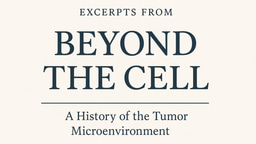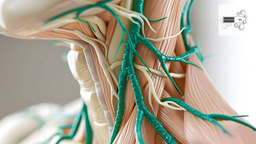Beyond the Cell: Angiogenesis
Published in Cancer
What if cancer couldn't grow unless it built its own blood supply? In this episode, we explore one of the most radical—and initially rejected—ideas in cancer biology: that tumors are not just cellular anomalies, but architects of their own vascular support. Meet Judah Folkman, the surgeon who proposed that cancer cells induce angiogenesis, and Harold Dvorak, whose discovery of VEGF helped explain how. Their work transformed cancer therapy and changed the way we understand the tumor microenvironment.
🎙️ This video is based on Beyond the Cell—an upcoming narrative history of the tumor microenvironment, written by cancer biologist Nick Pulliam, PhD.
📘 Subscribe to follow the real stories behind the science—and how they’re reshaping cancer research.
📚 References: Folkman J. Tumor angiogenesis: therapeutic implications. N Engl J Med. 1971. Dvorak HF. Tumors: wounds that do not heal. N Engl J Med. 1986. Ferrara N. VEGF and the quest for tumor starvation. Nat Rev Cancer.
Follow the Topic
Ask the Editor – Inflammation, Metastasis, Cancer Microenvironment and Tumour Immunology
Got a question for the editor about inflammation, metastasis, or tumour immunology? Ask it here!
Continue reading announcement




Please sign in or register for FREE
If you are a registered user on Research Communities by Springer Nature, please sign in